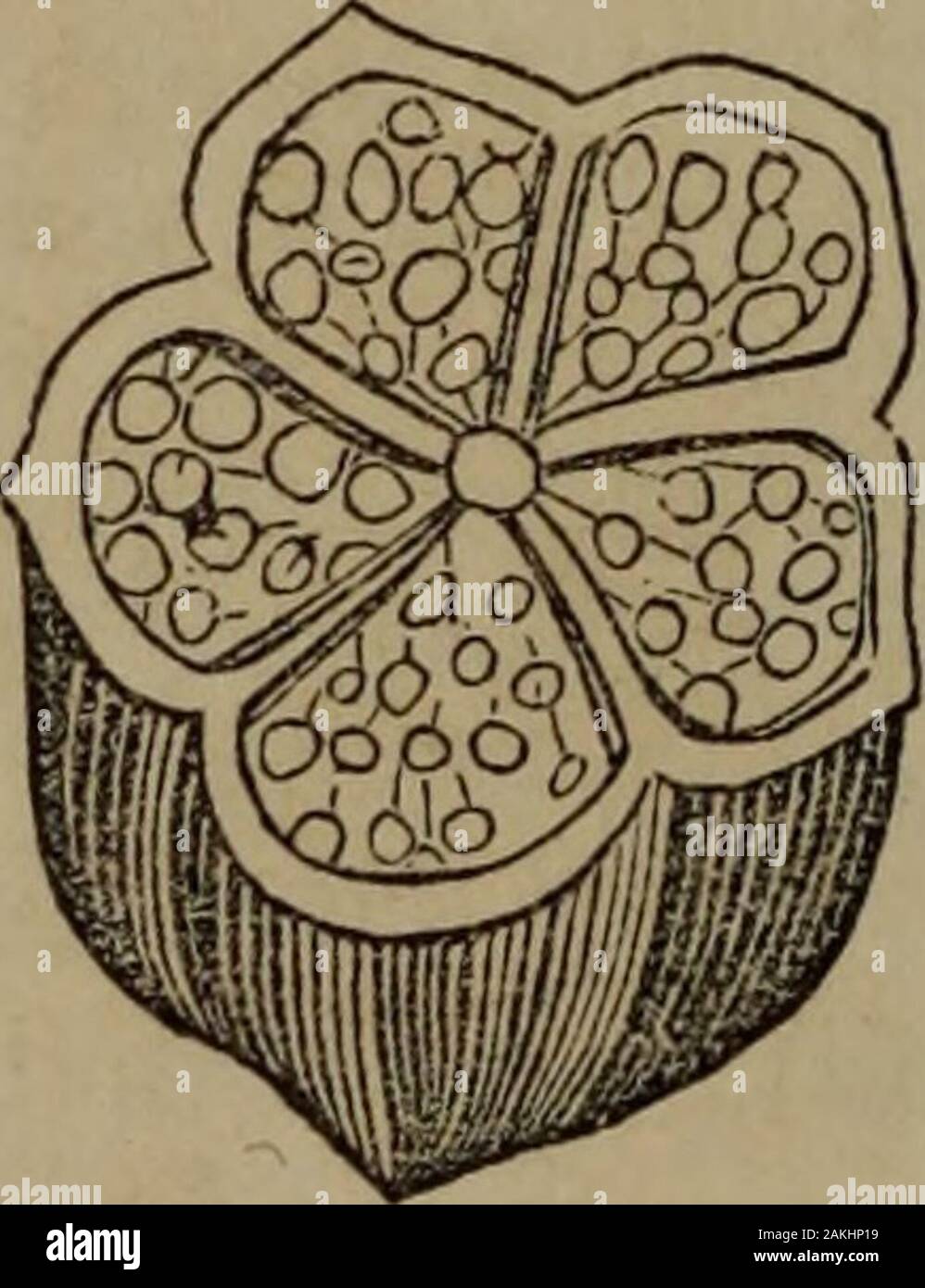Botany of the Southern states . vary, it fol-lows that the dissepiments, however thin andmembranous they may be, in some cases, are in reality double.All true dissepiments are necessarily vertical, and never hori-zontal, since the inflected margins of leaves could not unite insuch a manner. The number of dissepiments is always equal tothe number of carpels of which the ovary is composed, and thedissepiments are always alternate with the stigmas. A simpleovary can have no dissepiment. Should any fruit be observedwith dissepiments not reconcilable to the above principles, they arecalled spurious

Image details
Contributor:
The Reading Room / Alamy Stock PhotoImage ID:
2AKHP19File size:
7.1 MB (259.4 KB Compressed download)Releases:
Model - no | Property - noDo I need a release?Dimensions:
1385 x 1804 px | 23.5 x 30.5 cm | 9.2 x 12 inches | 150dpiMore information:
This image is a public domain image, which means either that copyright has expired in the image or the copyright holder has waived their copyright. Alamy charges you a fee for access to the high resolution copy of the image.
This image could have imperfections as it’s either historical or reportage.
Botany of the Southern states . vary, it fol-lows that the dissepiments, however thin andmembranous they may be, in some cases, are in reality double.All true dissepiments are necessarily vertical, and never hori-zontal, since the inflected margins of leaves could not unite insuch a manner. The number of dissepiments is always equal tothe number of carpels of which the ovary is composed, and thedissepiments are always alternate with the stigmas. A simpleovary can have no dissepiment. Should any fruit be observedwith dissepiments not reconcilable to the above principles, they arecalled spurious dissepiments. The only common one of-thischaracter with which students will meet, is that occurring in cruciferous plants, asthe Cabbage, Turnip, <fcc, in which theexpansion of the placenta forms a spu-rious dissepiment, stretching from oneside of the ovary to the other. In somecases in which the ovary is composed ofseveral carpels, there exists no dissepi-ment. This arises from one of twocauses. In one case the edges of the. Section of Hibiscus. Fig. 130.